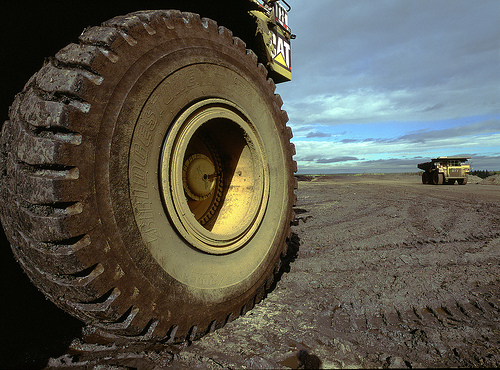ExxonMobil
-
Trimming astroturf from the American Petroleum Institute’s Vote 4 Energy ad
It’s not surprising that the American Petroleum Institute — Big Oil’s premium lobbying entity — is using a synthetic media strategy. Their Vote 4 Energy astroturf campaign spews misinformation like a two-stroke engine belching greenhouse gasses. It attempts to portray ‘real (cough cough) Americans’ who are ‘energy voters,’ which translates to voting for whichever politicians […]
-
Study: Climate skepticism leads directly to climate inaction
If you were wondering why industry heavies and their media housepets traffic in climate change skepticism, here’s why: It works. A study just published in the journal Nature Climate Change confirms that if you sow skepticism, you reap inaction. When Americans believe that there is widespread disagreement among climate scientists that climate change is real, […]
-
Big Oil's mountain of cash
Oil companies cling to tax breaks while hoarding tens of billions.
-
BP funds push for more offshore drilling in oil-soaked Louisiana
A little more than a year after the Gulf of Mexico oil spill, BP is funding a right-wing lobbying group that opposes regulation of offshore drilling.
-
Judge: Tar-sands equipment can't travel on Montanan backroads
A group of Montanans, Idahoans, Oregonians, and Washingtonians struck a blow against ExxonMobil and its push to extract carbon-soaked oil from Canada's tar sands this week. The Northwesterns weren't upset about the environmental impact of the tar sands, exactly, but they were upset that an Exxon subsidiary wanted to haul oversized loads of oil-extraction equipment from the Port of Vancouver, Wash., over small winding highways in environmentally valuable areas, to the Canadian border.
They asked a judge to stop the company from using those roads. And on Tuesday, he did. -
Hacking for the planet
Notorious hacker group Anonymous launches a campaign of cyber attacks in support of green causes. Monsanto fell. Are Canada's tar sands next?
-
Exxon vs. state government: Yellowstone clean-up now has dueling command centers
A week after an ExxonMobil pipeline burst under Montana's Yellowstone River, spots of oil have been found more than 80 miles downstream from the original spill. Exxon is on the clean-up case; more than 500 Exxon clean-up workers are on the scene, and the company has put down 8,000 feet of absorbent booms and 150,000 pads to soak up the oil. But the company is also being so sneaky in their proceedings that Montana Gov. Brian Schweitzer and his team huffed out of the incident command center and set up their own clubhouse.
-
Documents show Exxon downplayed time it took to seal Yellowstone spill
ExxonMobil told federal officials and Montana Gov. Brian Schweitzer that they had sealed the pipeline leaking oil into the Yellowstone River within 30 minutes. But federal documents show that sealing the pipe took 56 minutes -- almost twice as long as the company originally said.
The company told the AP that the error came about because the Exxon representative who briefed officials was providing information without the benefit of notes. In other words, not really intended to be a factual statement. -
ExxonMobil, historic flooding join forces to spread oil through Yellowstone River
The oil leaking from an ExxonMobil pipe into the Yellowstone River in Montana spread farther than the company said it anticipated. The reason, according to ExxonMobil’s spokespeople, is historic levels of flooding on the river. By Tuesday, Exxon had 280 people on the case, but still hadn’t managed to fight through floodwaters to reach the break in the pipeline. Exxon says the river is preventing its clean-up crews from going out on foot or in boats to look for oil on the river's banks.
Exxon did shut down the busted pipeline, but not before spilling more than 40,000 gallons of oil that they say it’s not yet safe to clean up, due to the floods. The company had been warned twice that it needed to check the pipeline for corrosion and update its emergency plans -- but now that there is actually a broken pipeline and an emergency, it’s obviously all the river’s fault.






